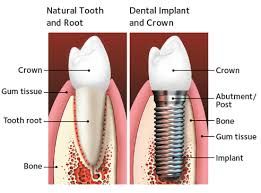Services
診療項目

General Dentistry
We are specialists in restoring or reinforcing teeth or parts of teeth lost due to cavities or accidents using artificial materials, restoring the functionality of the patient's mouth and the beauty of their appearance. With specialized knowledge and experience, we consult with patients and proceed with the most appropriate treatment based on our judgment and planning skills.
Crown
When the visible part of the tooth (crown) is severely damaged, we insert a metal core into the root part within the gum to create a new tooth.
Bridge
This is a method of bridging an artificial tooth using the adjacent teeth as supports. It's used when one or two teeth are missing but the surrounding teeth are still strong.
Partial and Full Dentures
These are devices that replace missing teeth or parts of the bone supporting the teeth due to cavities or accidents. They restore form and appearance, improving eating, speaking, and aesthetics. Full dentures are for those who have lost all teeth in the upper or lower jaw (edentulous patients).
Implant
This method involves embedding metal, mainly titanium, into the bone where a tooth is missing, and creating an artificial tooth on top. It's also called an artificial tooth root.



Orthodontics
We are specialists who diagnose and work to prevent, halt, and correct developmental and formational abnormalities of the bite, as well as the nerves, muscles, and bones of the head and neck area. Orthodontic treatment aims to correct misaligned teeth and bites to create a beautiful teeth alignment. However, we generally do not grind down teeth to create "false teeth" for the sake of alignment. Instead, we gradually move teeth and jaw bones by applying force through orthodontic appliances.
Professionally, misaligned teeth or improper bites are called "malocclusion." If left untreated, malocclusion can lead to the following problems:
- Difficulty chewing food
- Unclear speech
- Increased risk of cavities
- Increased risk of periodontal disease
- Cause of bad breath
- Strain on jaw joints
- Higher risk of tooth fracture or injury
Moreover, correcting malocclusion can help patients gain confidence in their appearance and resolve longstanding complexes, which is also an important aspect.


Endodontics
Endodontics is the branch of dentistry which is concerned with the morphology, physiology and pathology of the human dental pulp and periradicular tissues. Its study and practice encompass the basic and clinical sciences including biology of the normal pulp, the etiology, diagnosis, prevention and treatment of diseases and injuries of the pulp and associated periradicular conditions. (Adopted December 1983)

Periodontal Treatment
We are specialists in early detection and diagnosis of diseases affecting the tissues supporting the teeth (mainly gums and bones), and in prevention and treatment to maintain overall oral health, functionality, and aesthetic appearance. Periodontal disease often progresses without pain, worsening while dental check-ups are neglected. Therefore, bi-annual check-ups and cleanings are essential. During these visits, the dentist or dental hygienist assesses not only cavities but also gum health, and if necessary, seeks advice from a periodontal specialist at an early stage.

Pediatric Dentistry
We are specialists providing prevention, treatment, and health guidance for patients from infancy through adolescence. From the time of baby teeth, we provide guidance and treatment to promote normal growth and development of teeth and jaws, not just for cavities but also to ensure proper alignment and bite of permanent teeth, fostering healthy and beautiful teeth. We conduct examinations in an atmosphere where children can feel at ease, understanding child psychology and encouraging interest in their own teeth. We teach the importance of prevention from childhood to maintain better oral hygiene even into adulthood.
Roles of Baby Teeth
- Function for eating: chewing food, mixing with saliva, and swallowing (masticatory function).
- Jaw development through chewing, which helps shape the baby's face.
- As teeth align, speech pronunciation becomes clearer.
- Chewing improves blood flow to the brain, potentially enhancing comprehension abilities.
- When transitioning from baby teeth to permanent teeth, the roots of baby teeth are absorbed, assisting in the eruption of permanent teeth.
